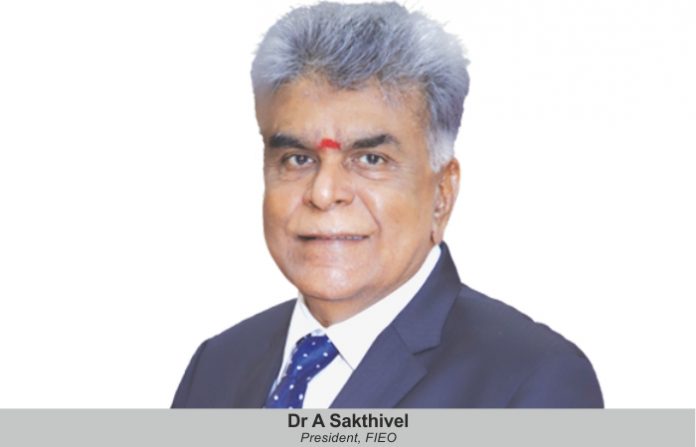Dr A Sakthivel, President, Federation of Indian Export Organisations (FIEO), shares exporters’ achievements have not only helped economy reap large benefits but have also put India on track to become a US$ 5 trillion economy by 2025. Brand India products have already carved niche in international market in terms of quality and dependability, he adds.
Bryan Anthony Thomas
What are the sector’s most recent advancements?
One of the latest developments to aid the Indian foreign trade sector has been the RBI’s decision to settle international trade transactions in INR. Exporters welcomed this since it enables them to trade with nations facing sanctions or foreign exchange shortages. This action will pave the way for the trading and settlement of EXIM transactions in INR. The move comes at a time when many countries, especially Africa and South America, are facing acute forex shortages. Allowing only EXIM transactions via letters of credit will help both exporters and importers. The first step is to recognise the INR as an international currency. The central government may clarify this issue soon.
What ails the sector, and how would you advise removing bottlenecks?
Global trade has started to show signs of contraction. It is facing a triple whammy: a shift in consumption from goods to services; high inflation across economies, reducing purchasing power and pushing interest rates; and high inventories. However, these are driven by market forces, with the government playing no role. GoI has come up with a slew of measures to aid the export sector, including a reduction in central excise duty on petrol and diesel, a reduction in import duty on raw materials such as steel and plastic, and a rise in export duty on iron-ore and steel intermediates. Besides the reduction in customs duty on raw cotton from 10 per cent to zero, the extension of the interest equalisation scheme and the extension of various export applications by six months have raised manufacturing and export competitiveness and propelled value-added exports. There is a need to push value-added exports, augment container manufacturing, develop an Indian shipping line, increase the validity of RoSCTL and RoDTEP (export/import documents) to 24 months and link transferability with realization, extend RoDTEP to EOUs, SEZs, and Advance Authorization, expand usage of RoDTEP and RoSCTL scripts, and provide logistics support for the sector looking at reducing the higher freight costs.
What are the future plans of FIEO?
Export promotion has been a priority of mine ever since becoming FIEO President. With an emphasis on product and market diversification and the development of a dynamic virtual platform for buyers and sellers, it has been my aim to showcase Indian products around the globe. In collaboration with all stakeholders, our vision is to make exports a national priority and to fully cooperate with the government to achieve the aim. The exporters and the supportive ecosystem provided by the government have strived to meet the milestone of US$ 422 billion in merchandise exports and US$ 254 billion in services exports in 2021–22. Since the world is steadily reopening, physical exhibitions and trade shows should be held in every part of the globe. We are committed to providing our MSMEs with the best possible showcasing opportunities throughout the current fiscal year.
What is the latest buzzword at FIEO?
The continued resilience of the Indian export sector, along with the utstanding performance of the EXIM community, has not only boosted the sector but also aided the economy in maintaining its high growth trajectory. Exporters’ achievements have not only helped the economy reap large benefits but have also put India on track to become a US$ 5 trillion economy by 2025. Brand India products have already carved a niche in the global market in terms of quality and dependability. What is buzzing in the sector is the fervour and vigour of our exporting community.















